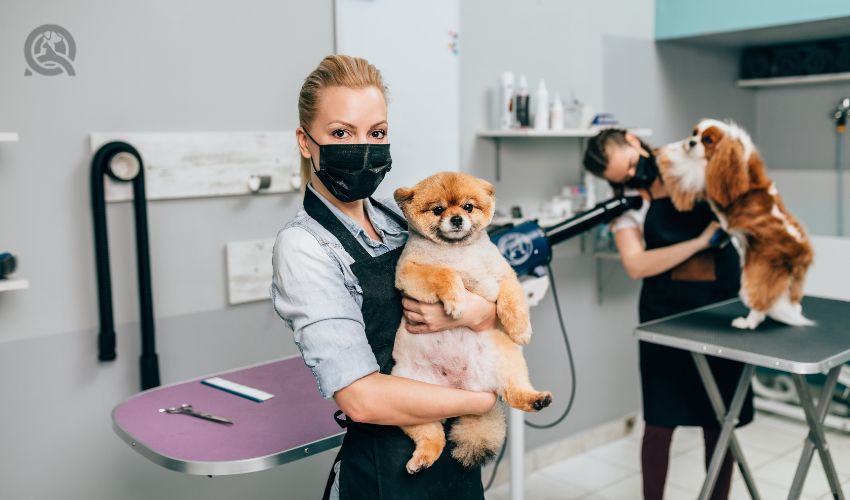Imagine spending your days surrounded by the joyful wagging of tails, the playful bounce of paws, and the comforting purring of cats. For professional animal groomers, this idyllic image becomes their reality, a symphony of love and laughter. However, lurking beneath this seemingly cheerful facade lies a silent threat – groomer’s lung, an insidious condition that can stealthily compromise their health.

Image: stefaniejackson.com
Groomer’s lung, also known as hypersensitivity pneumonitis, is an occupational respiratory ailment that affects those who work in close proximity to animals. The culprit behind this condition is the constant inhalation of organic dust, a hazardous concoction of dander, hair, saliva, and urine, released into the air as animals are groomed. These tiny particles, when inhaled, trigger an exaggerated immune response within the lungs, leading to a cascade of inflammation and tissue damage.
The onset of groomer’s lung can vary significantly from person to person, making its detection a deceptive challenge. In some cases, symptoms may surface within a few months of exposure, while others may take years to manifest. The insidious nature of this condition underscores the importance of awareness and vigilance for those who work in the animal care industry.
The clinical presentation of groomer’s lung is a tapestry of respiratory symptoms that may include shortness of breath, a persistent cough, wheezing, and chest tightness. When exposed to triggers, affected individuals may also experience fever, chills, and fatigue, painting a picture of discomfort and debilitation. In its advanced stages, groomer’s lung can lead to permanent lung damage, scarring, and even respiratory failure, casting a somber shadow over the lives of those afflicted.
Time is of the essence in safeguarding the health of animal groomers. The sooner groomer’s lung is recognized and diagnosed, the more effective the treatment plan can be. A constellation of tests, including chest X-rays, lung function assessments, and blood tests, can help unravel the mysteries of this hidden hazard.
Confronting groomer’s lung requires a multifaceted approach, prioritizing both prevention and treatment. The primary defense lies in minimizing exposure to organic dust. This can be achieved through the use of personal protective equipment, such as NIOSH-approved respirators, which act as a shield against harmful particles. Regular cleaning and maintenance of grooming facilities, coupled with effective ventilation systems, further reduce the risk of exposure, creating a safer work environment for professional animal groomers.
For those who have already developed groomer’s lung, treatment focuses on managing symptoms and preventing further lung damage. Medications, such as inhaled corticosteroids and bronchodilators, can help alleviate inflammation and improve breathing. In severe cases, oxygen therapy may be necessary to support lung function. Additionally, avoiding triggers and making lifestyle modifications, such as quitting smoking, can contribute to a better quality of life for affected individuals.
The path forward in the fight against groomer’s lung lies in education and empowerment. Animal groomers should be equipped with comprehensive knowledge about this occupational hazard, its symptoms, and the importance of protective measures. Regular health screenings and access to appropriate medical care are crucial for early detection and timely intervention. By embracing a proactive approach, we can break the silence surrounding groomer’s lung, creating a work environment where the health of animal care professionals is valued and protected.
In conclusion, groomer’s lung is a somber reminder of the hidden hazards that can lie beneath the surface of seemingly harmless occupations. Through heightened awareness, proactive prevention, and compassionate care, we can safeguard the health of animal groomers, ensuring that their days are filled with the joy of caring for our furry companions without compromising their own well-being.

Image: groomersland.com
How Long Does It Take To Develop Groomers Lung







